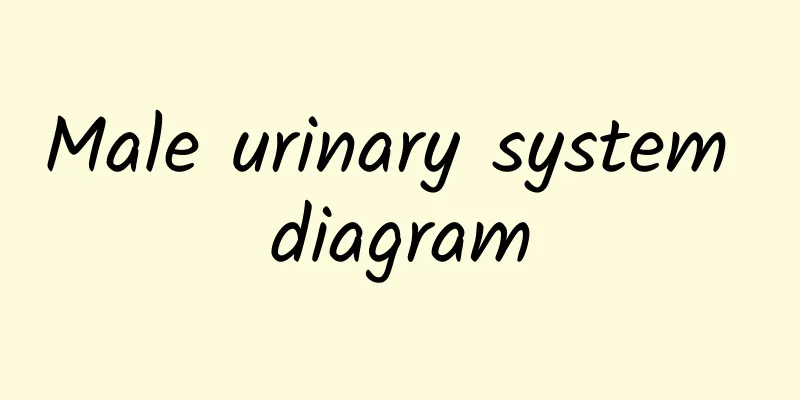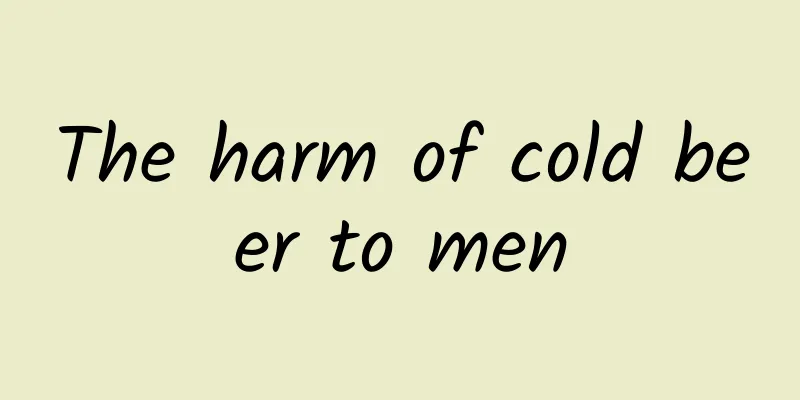Male urinary system diagram

|
The main function of the urogenital system is to excrete the water-soluble waste (such as urea, uric acid, creatinine) and unnecessary water and some carbonates produced by the body in basic metabolism. The kidney is the organ that produces urine. Urine is temporarily stored in the bladder through the urethra. When the urine reaches a certain amount, it is discharged from the body through the urethra under the regulation of the central nervous system. The urethra, bladder and urethra are the urine channels. The kidney can adjust the total output of body fluids, blood positive ion composition, plasma osmotic pressure and pH acidity. The quality and quantity of urine often change with changes in the body's natural environment, and play a key role in maintaining the relative stability of extracellular fluid and electrolyte balance. In addition, the kidneys also have endocrine functions and can produce and release renin, prostaglandins, etc. If kidney function is impaired, metabolic substances accumulate in the body, changing the physical and chemical properties of extracellular fluid, which will cause corresponding changes. In more serious cases, it can cause uremia and even seriously endanger life. Let's take a look at the structure of the male andrological system below! Section 1 Kidney 1. The shape of the kidney The kidney is a pair of actual human organs, similar in shape to a cowpea. Fresh kidneys are light brown, soft and smooth. The size of the kidney varies from person to person. A man's kidney weighs 120 to 150 grams on one side, and is about 10 cm long, 5 cm wide and 4 cm thick on average. Generally, women's kidneys are slightly smaller than men's. The kidney can be divided into upper and lower sides, front and back sides, and inner and lateral edges. The upper and lower sides of the kidney are blunt; the front side is convex and faces the front sides; the back side is flat and close to the posterior abdominal wall; the lateral edges of the kidney are convex; the indentation in the middle of the inner edge is called the renal hilum. The renal hilum is a network of portals for the blood vessels, nerves, lymphatic vessels and renal pelvis of the kidney to enter and exit. The structures entering and exiting the renal hilum are enclosed by connective tissue and are called the renal pedicle. The order of the key structures of the renal pedicle is: from front to back, they are the renal vein, renal artery and renal pelvis; from top to bottom, they are the renal artery, renal vein and renal pelvis. The right renal pedicle is shorter than the left one, which may cause certain difficulties during surgical treatment. The cavity formed by the indentation of the renal hilum into the renal parenchyma is called the renal sinus. It contains structures such as the renal pelvis, renal calculus, renal blood vessels, lymphatic vessels, nerves and human fat tissue. 2. Location of the Kidney The kidney is located behind the peritoneum, on both sides of the spine, close to the upper end of the posterior abdominal wall. It is a retroperitoneal extracorporeal human organ. The short axis of the kidney tilts outward and downward. Generally, the upper end of the left kidney is level with the outer edge of the 11th lumbar vertebra, and the lower end is level with the outer edge of the 2nd intervertebral disc. The right kidney is lower than the left kidney because it is affected by the liver, that is, the upper end of the right kidney is level with the upper edge of the 12th lumbar vertebra, and the lower end is level with the upper edge of the 3rd intervertebral disc. The 12th rib passes obliquely through the middle of the back of the left kidney and the upper end of the back of the right kidney. The renal hilum is approximately level with the plane of the 1st intervertebral disc, about 5 cm from the center line. The position between the two lateral edges of the lateral spinal muscles and the middle of the 12th rib is called the renal area (costo-spinal angle), and the epidermal projection of the renal hilum on the posterior abdominal wall is generally located in this area. In some people with kidney disease, tapping or pressing this area can cause pain. There are adrenal glands on the upper inner side of each kidney. The position of the kidney can move left and right by about 2 to 3 cm with breathing and posture. The position of the kidney is generally smaller in women than in men, and smaller in children than in adults. The position of the kidney in newborns is even lower, even reaching the periphery of the iliac crest. 3. The membrane of the kidney The surface of the kidney is covered with three layers of membranes, from the inside to the outside: chemical fiber capsule, human fat capsule and renal muscle fascia. 1. The fibrous capsule is a high-density, tough connective tissue membrane close to the surface of the kidney, containing a small amount of collagen fibers. Under normal conditions, the fibrous capsule is easily separated from the renal parenchyma; under pathological conditions, it can adhere to the renal parenchyma and is not easy to separate. When repairing a renal rupture or removing part of the kidney, this membrane needs to be sutured surgically. 2. The adipose capsule is a cystic layer of adipose tissue that wraps around the cervical vein, also known as the renal bed. The fat around the kidney is thicker and extends from the renal hilum into the renal sinus, where the adipose tissue connects the two. The adipose capsule plays a protective role like a stretching cushion for the kidney and is the location for the closed renal capsule in clinical medicine. 3. Renal fascia tightly surrounds the kidney outside the human body fat capsule. Renal fascia is divided into two layers, front and back, which surround the kidney and adrenal glands. The two layers are connected to each other above the adrenal glands and on both sides of the kidney. The two layers are separated directly below the kidney, with the urethra in between. On the inner side of the kidney, the front layer widens in front of the kidney and renal blood vessels, and continues with the front layer of the other side of the renal fascia in front of the abdominal aorta and the inferior vena cava, and the back layer is connected to the psoas major fascia. The renal muscle fascia sends many small bundles of connective tissue to the deep surface, passing through the human fat capsule and connecting to the fibrous capsule, which has the effect of fixing the kidney. The normal position of the kidney is maintained by a variety of factors. In addition to the renal capsule, renal blood vessels, adjacent organs of the kidney, intra-abdominal pressure and retroperitoneum all play a role in anchoring the kidney. When the anchoring structure of the kidney is imperfect, it can cause kidney ptosis or walking kidney. 4. Structure of the Kidney In a coronary cross-section of the kidney, the renal parenchyma is divided into the outer renal cortex and the inner renal medulla. 1. The renal cortex is located in the superficial part of the kidney, with rich blood vessels. Fresh specimens are light brown with tiny bright red speckled particles. It is mainly composed of renal corpuscles and renal tubules. The part of the renal medulla deep inside the renal cortex is called the renal columns. 2. The renal medulla is located in the superficial layer of the renal cortex, has few blood vessels, is light in color, and is mainly composed of damaged renal tubules. There are 15 to 20 renal pyramids in the medulla. The renal pyramids are cone-shaped, with the base of the pyramid facing the renal cortex and connected to the cortex. The pattern of the deep cortex radiating from the base of the renal pyramid is called the medullary ray; the renal cortex located between the medullary ray is called the cortical labyrinth. The top of the pyramid is blunt and penetrates into the renal cupule in a nipple-like manner, called the renal papillae. There are many papillary holes on the top of each renal papilla, which are the openings of the collecting ducts. The urine produced by the kidney opens into the renal cupules through the papillary holes. Each renal cupule receives 1 to 3 renal papillae. There are 7 to 8 funnel-shaped renal calices (minor renal calices) in the renal sinus, which surround the renal papilla. 2 to 3 renal calices form a renal calices (major renal calices), and each kidney has 2 to 3 renal calices, which converge into a renal pelvis that is flat and funnel-shaped from front to back and left to right. After the renal pelvis leaves the renal gate, it curves downward and gradually narrows to become the urethra. Section 2. Urethra The urethra is a pair of long, thin muscular tubes located behind the peritoneum, starting from the lower part of the renal pelvis and ending at the bladder, about 25 to 30 cm long. Urine is continuously discharged into the bladder through the regular peristalsis of the smooth muscle. The course and segmentation of the urethra: The urethra is divided into three sections according to its course: the abdominal section, the pelvic section, and the intramural section. The abdominal section starts and ends below the renal pelvis, then slides down along the front of the psoas major muscle to reach the entrance of the pelvic bone. The left urethra passes just in front of the tail end of the left common iliac artery, while the right urethra passes just in front of the starting and ending parts of the right external iliac artery, enters the pelvis, and moves to the pelvic section. The pelvic section moves forward and downward along the surface of the vascular nerves of the pelvic wall. After crossing the ejaculatory duct, the male urethra passes through the bladder from the outer upper corner of the bladder to the front and inward; the female urethra passes through both sides of the cervix to the bladder, and the uterine artery crosses its front and upper side about 1 to 2 cm from both sides of the cervix. When hysterectomy is performed to treat the uterine artery ligation, pay attention to this relationship and do not injure the urethral tube. The intramural segment is the part of the urethral tube that obliquely passes through the bladder wall, with the urethral tube opening inside the bladder. When the bladder is full, the bladder gas pressure rises, pressing the intramural segment, closing the lumen, and preventing urine from flowing back from the bladder to the urethral tube. Because of the peristalsis of the urethral tube, urine can still continue to enter the bladder. There are three physiological narrow places along the entire urethra: the transition between the hemoglobin and the urethra; the place where the hemoglobin passes over the iliac vessels; and the inner part of the replenishing wall. This narrow place is where ureteral stones are likely to stay. Section 3: Bladder The urinary bladder is a sac-like muscle organ that stores urine and uses smooth muscle to contract to discharge urine into the urethra. The shape, size, location and thickness of the bladder wall vary with the level of urine flushing, age and gender. The average bladder volume is 300-500ml for normal adults, and the maximum volume reaches 800ml. The bladder capacity of a newborn is about 1/10 of that of an adult. The capacity of the elderly increases because the tension and strength of the bladder muscles are reduced. The bladder capacity of women is smaller than that of men. 1. The shape and parts of the bladder When the bladder is depressed, it takes on a triangular pyramidal shape and can be divided into four parts: the tip, base, body, and neck. The tip of the bladder is small and faces forward and upward. The base of the bladder is similar to a triangle, with the body facing backward and downward. The area between the tip and base of the bladder is the bladder body. The lowest part of the bladder is called the bladder neck, which is connected to the urethral opening by the inner opening of the urethra. There is no obvious boundary between the bladder. When the bladder is full, it takes on an elliptical shape. 2. Bladder location and proximity The bladder of an adult is located on the anterior side of the pelvis. It is covered by the retroperitoneum above, and is close to the sciatic tuberosity in front; behind it are the seminal vesicles, ejaculatory ducts and duodenum in men, and the uterus and vagina in women; below the bladder, in men, it is adjacent to the prostate, and in women, it is adjacent to the urogenital diaphragm. When the bladder is congested, the tip of the bladder does not exceed the upper edge of the ischial tuberosity. When the bladder is full, the tip of the bladder rises above the ischial tuberosity, and the retroperitoneum of the anterior abdominal wall folded toward the bladder also shifts, making the anterior and lower walls of the bladder directly close to the anterior abdominal wall. At this time, when bladder puncture or bladder surgery is performed above the ischial tuberosity, damage to the retroperitoneum can be avoided. The bladder of a newborn is higher than that of an adult, and most of it is located in the abdomen. As the baby ages and the pelvis grows and develops, it gradually descends into the pelvis, reaching the human body during puberty. The bladder of the elderly is located even lower because of the relaxation of the pelvic floor muscles. Fourth urethral opening The urethra is the tube that connects the bladder to the outside of the body. The male and female urethra are very different. The male urethra is located in the male reproductive organ. The female urethra is shorter, wider, and straighter than the male urethra, about 5 cm long, and has only urination function. It originates from the internal opening of the urethra in the bladder, passes through the front of the vagina, and then goes forward and downward, passing through the urogenital diaphragm, and opens into the vestibule of the vagina with the external urethra. When the urethra passes through the urogenital diaphragm, it is surrounded by the urethra vaginal sphincter (iliac muscle), which can control urination. Because the female urethra is short, wide, and straight, it is easy to cause retrograde urinary tract infection. Small stones, foreign bodies, and excrement can also be removed through the urethra. |
<<: Causes of genital acne in men
>>: Male Ox Zodiac Compatibility Chart
Recommend
Is it good for men to cupping frequently?
Cupping is a Chinese traditional medicine. Many p...
What is the reason why men grind their teeth at night?
Many people don’t know what kind of sleeping posi...
How to reduce the sensitivity of the glans corona
The time of male ejaculation is closely related t...
Where is the male bladder located?
We should know that we humans are made up of seve...
Six types of good men can bring a woman a lifetime of happiness!
What kind of man can make a woman love him/her fo...
Recipes suitable for fitness, eat to lose fat and gain muscle
People's pursuit of men is no longer as simpl...
How to cook pork liver and celery: these three methods must be learned
Celery and pork liver are two common ingredients i...
A few small bumps grew next to them.
There are actually many reasons for the growth of...
Morning erections are normal, but erections are not possible on normal days
Can men not achieve sexual pleasure if they canno...
Known as natural Viagra! The efficacy and function of Epimedium
Nowadays, men like to have a strong body and good...
What is the cause of bleeding during masturbation?
Men call masturbation "flying", and bas...
A small granulation grew on the scrotum
There is a small granulation on the male testicle...
Do boys have to be circumcised?
With the continuous improvement of people's a...
Preventive care for 30-year-old night sleep
In fact, nowadays male friends are under much mor...
Why do you sweat after drinking water? See if you are suffering from pathological or physiological reasons!
Sweating is a very normal physical phenomenon. Wh...









